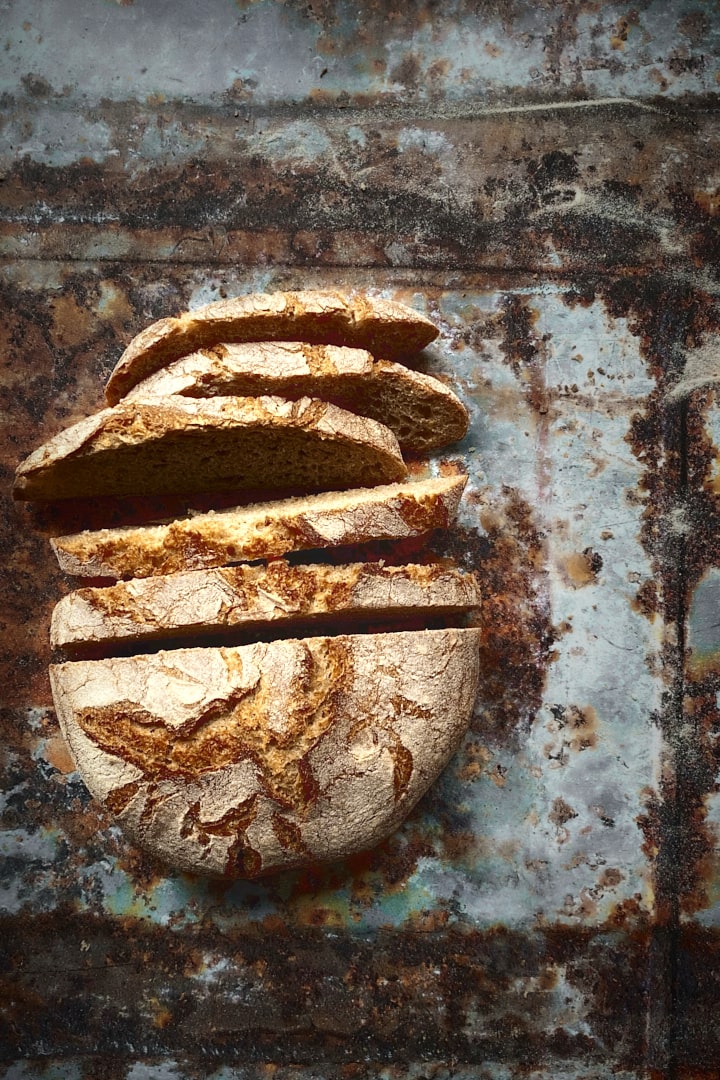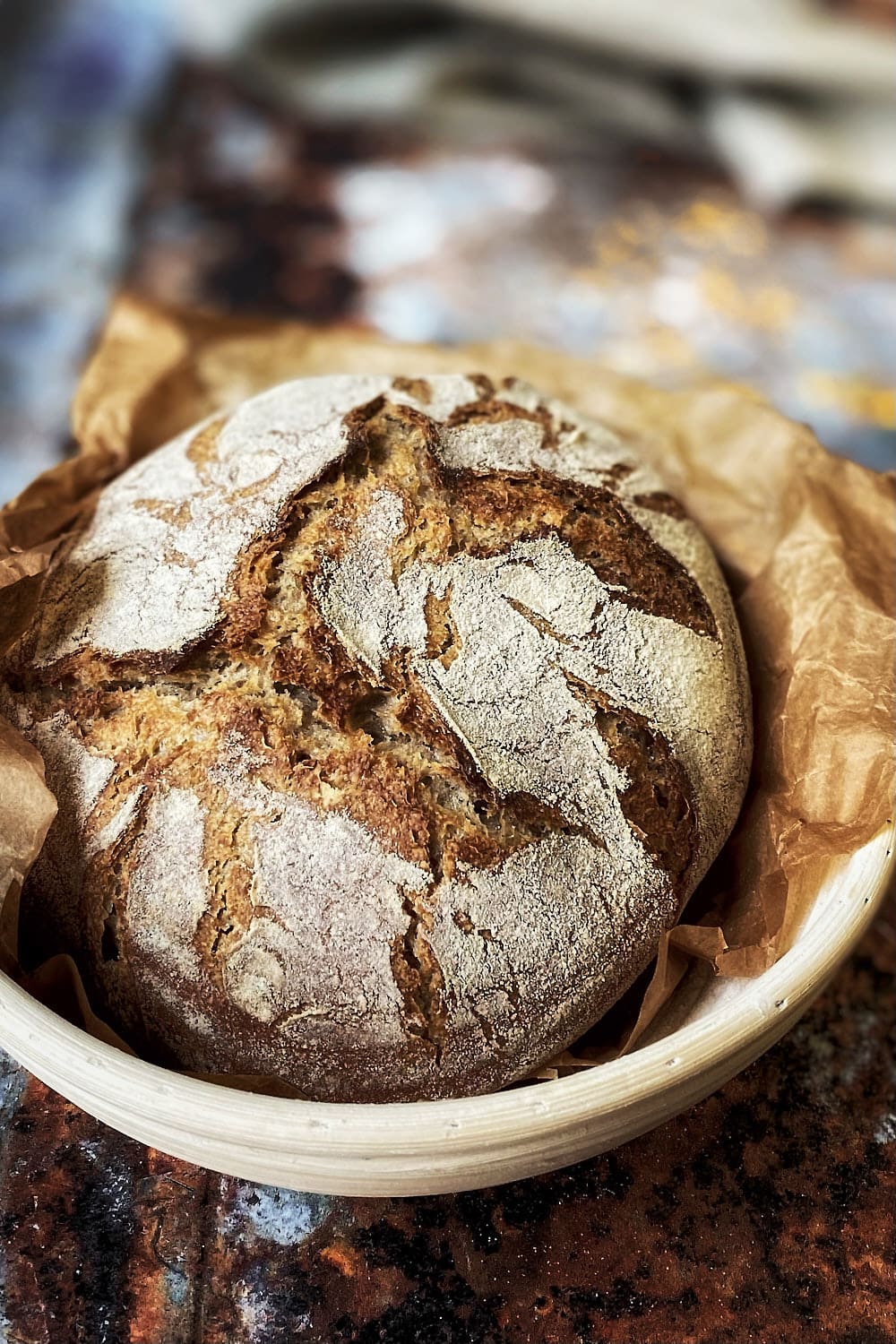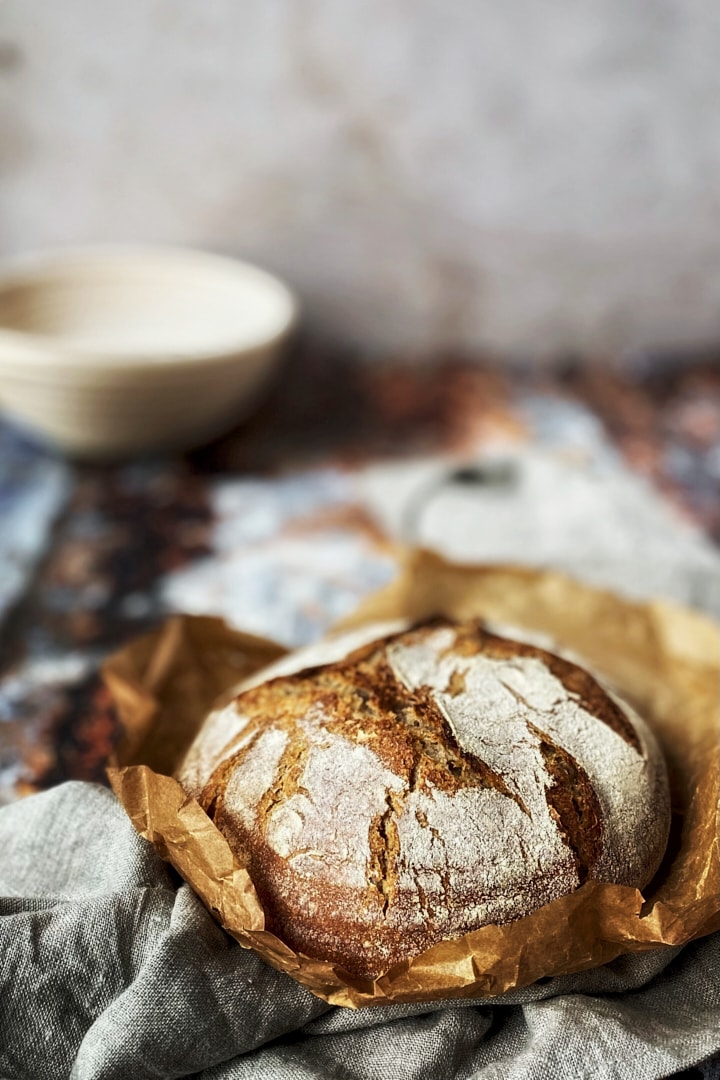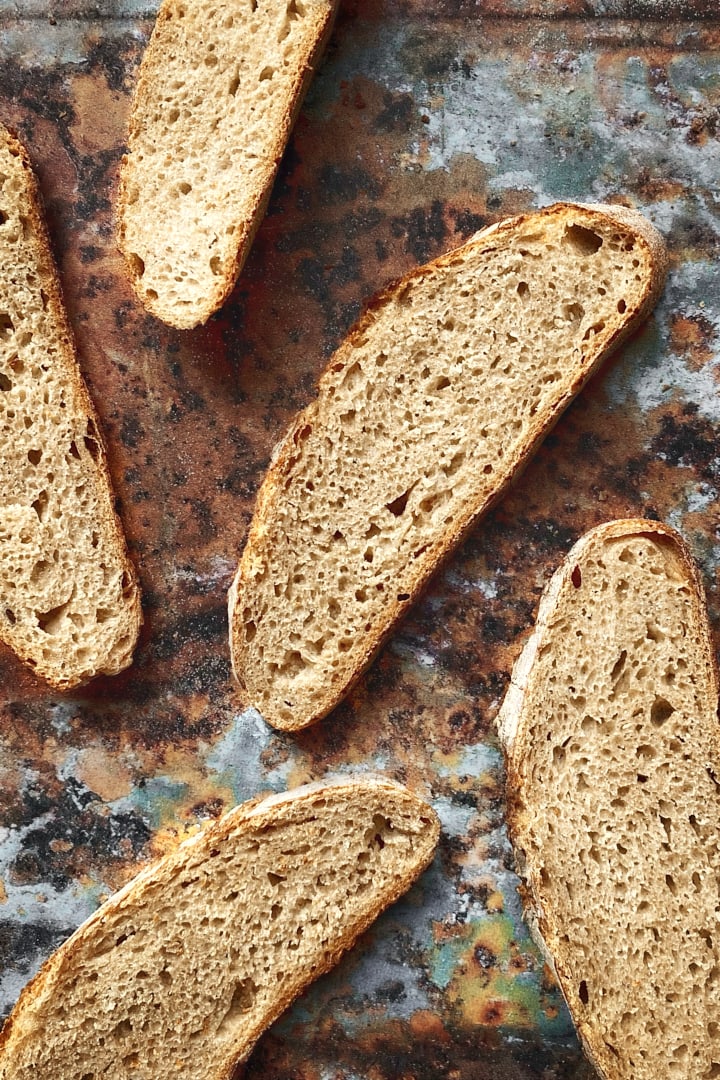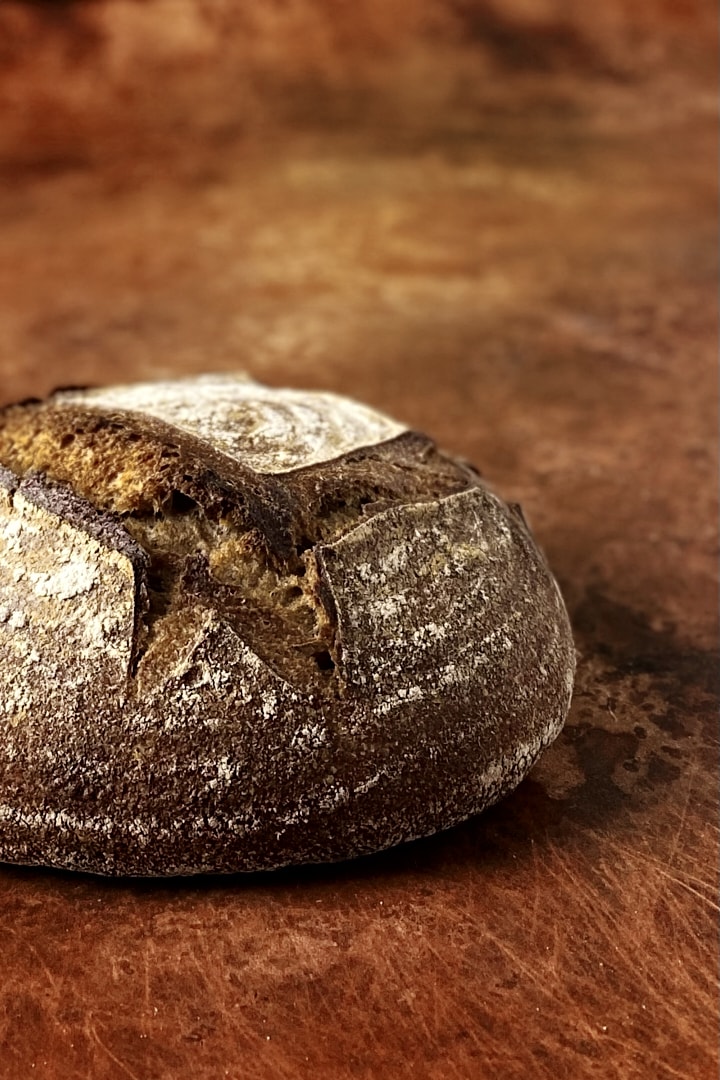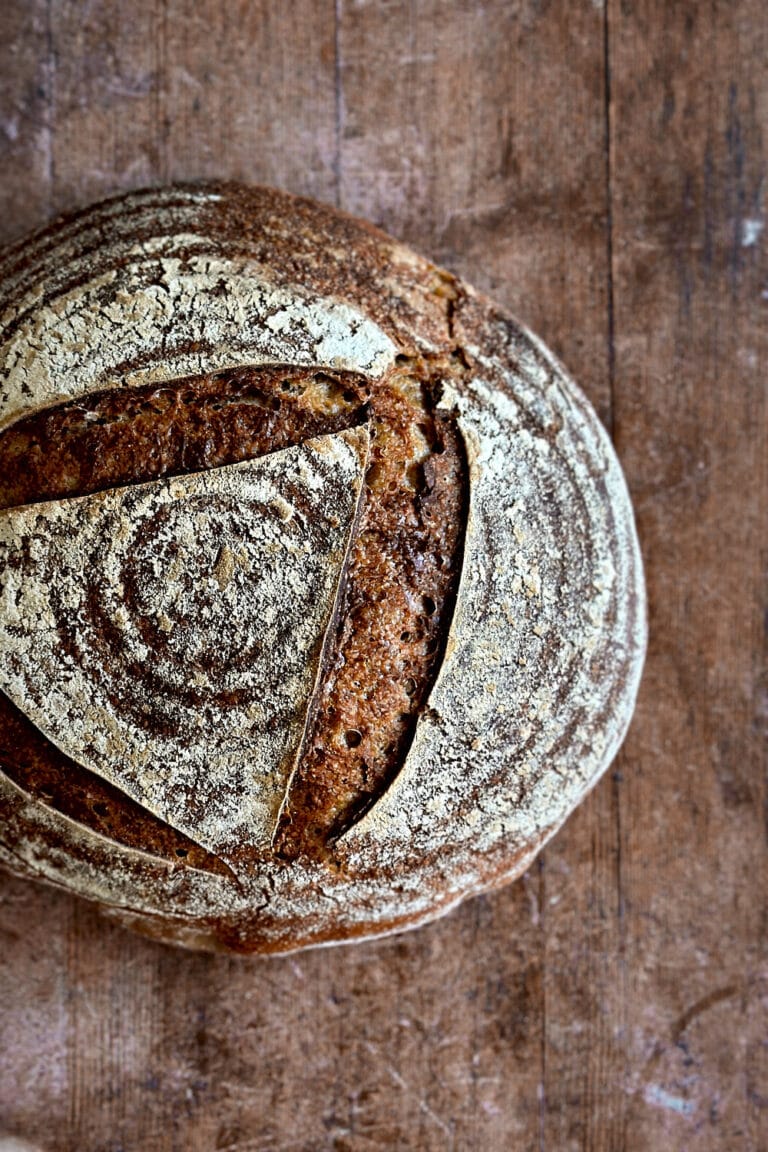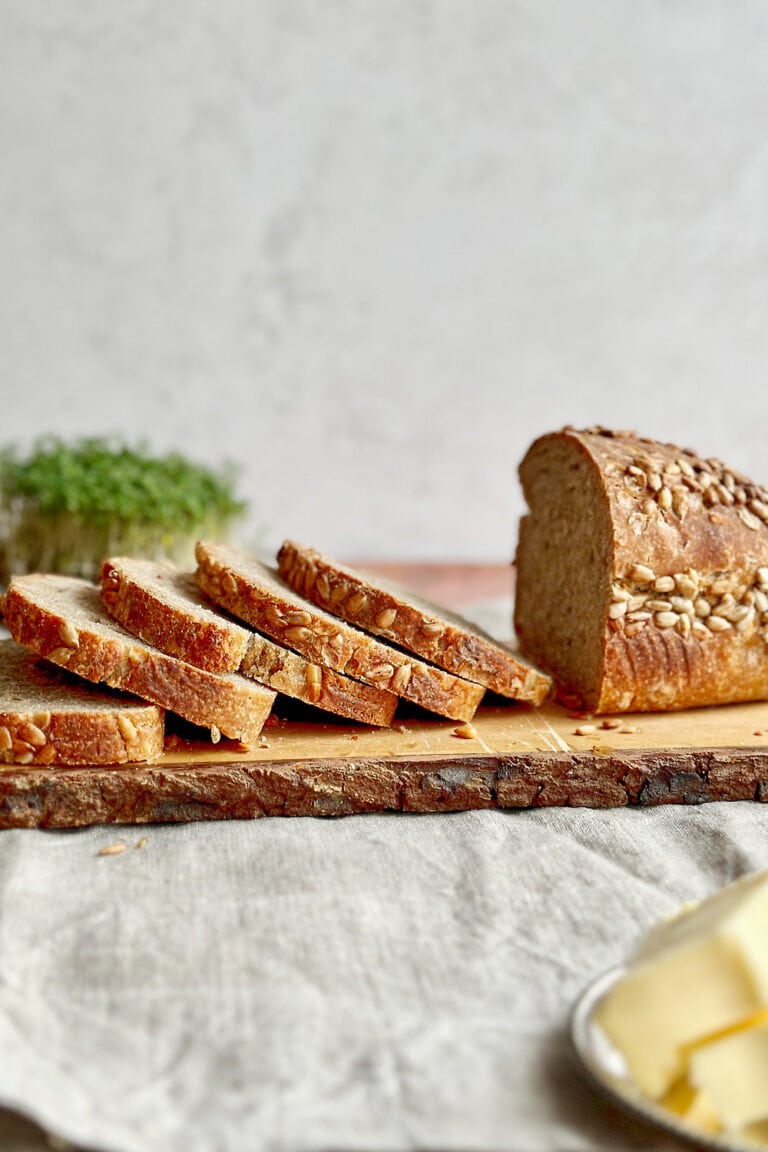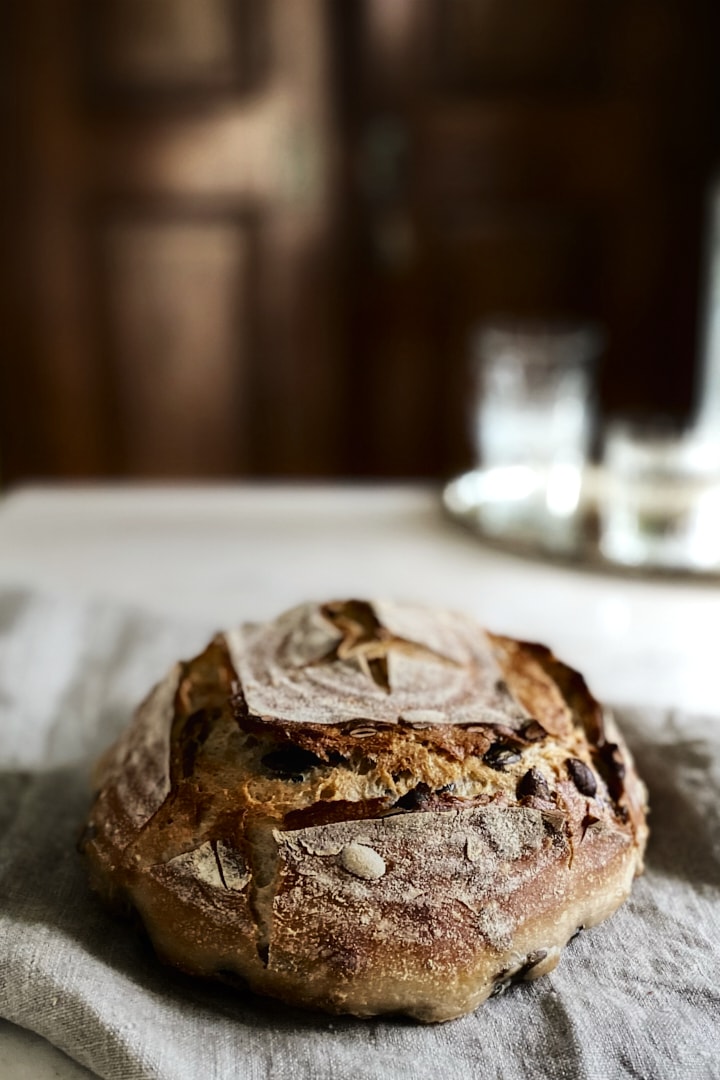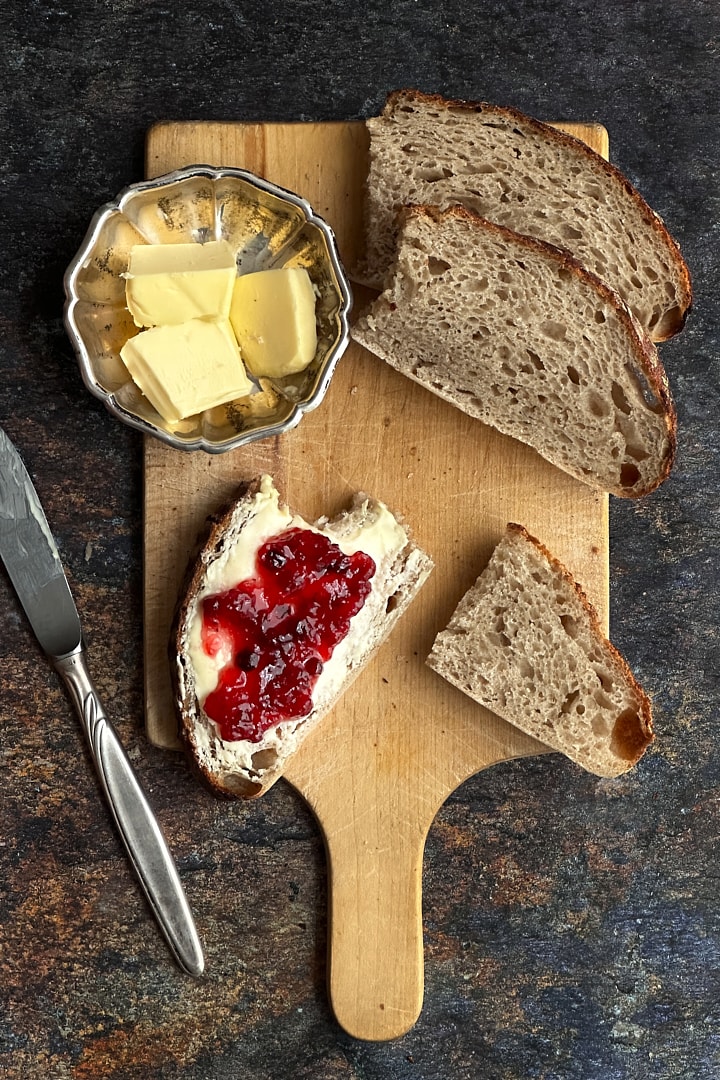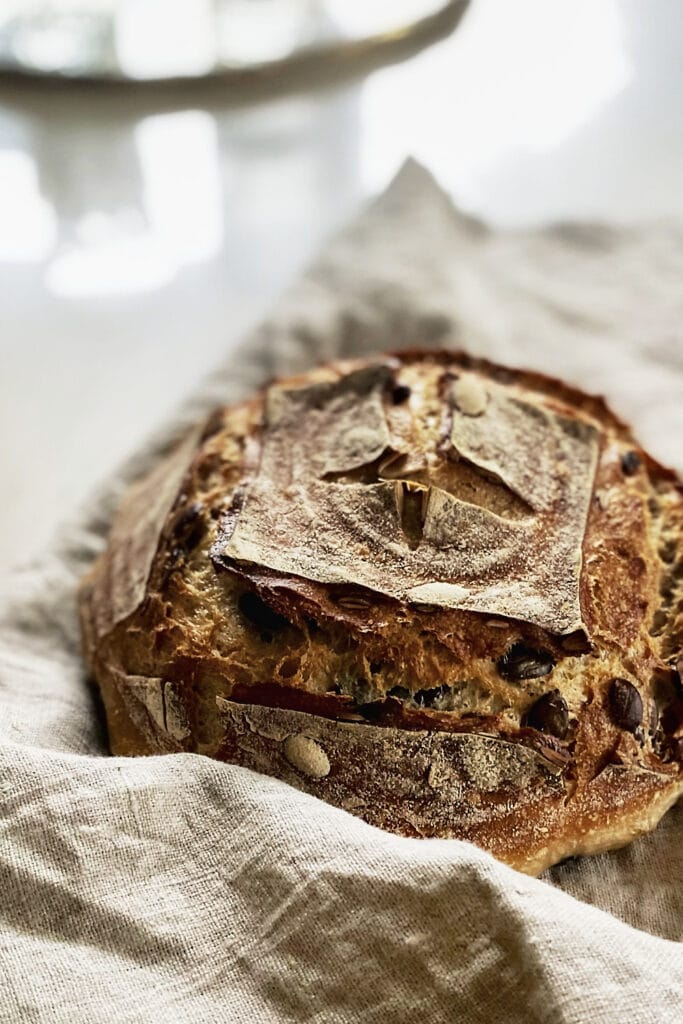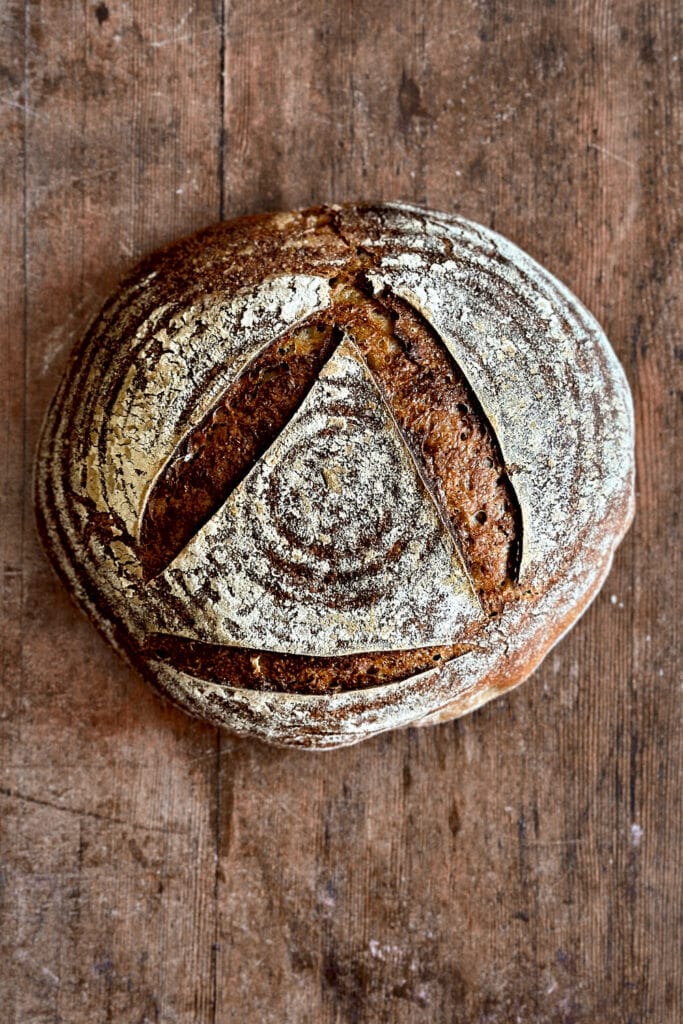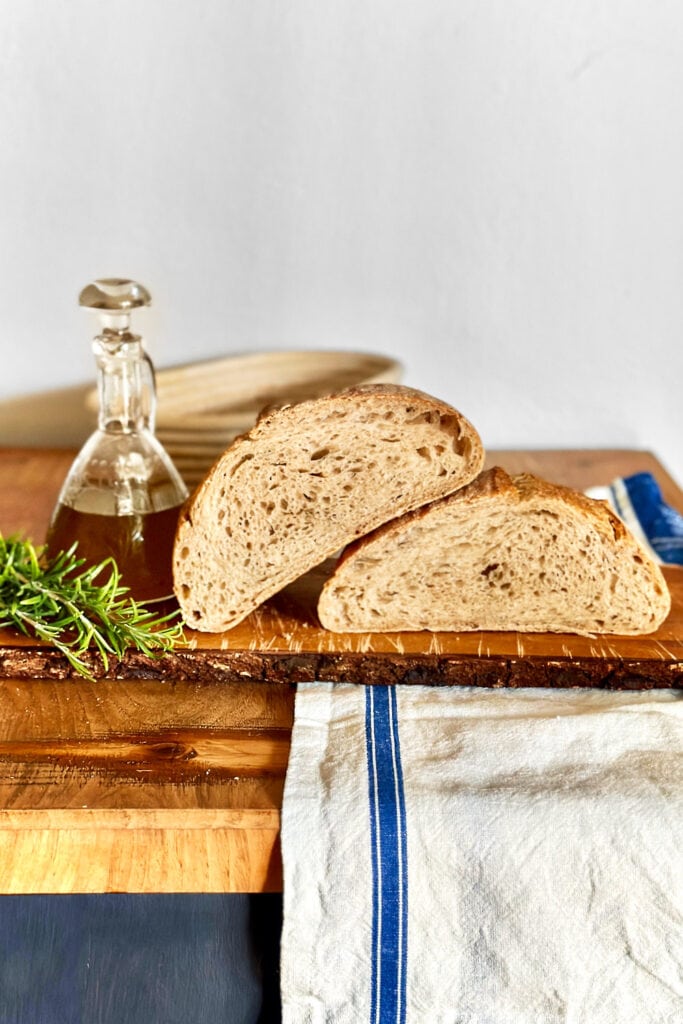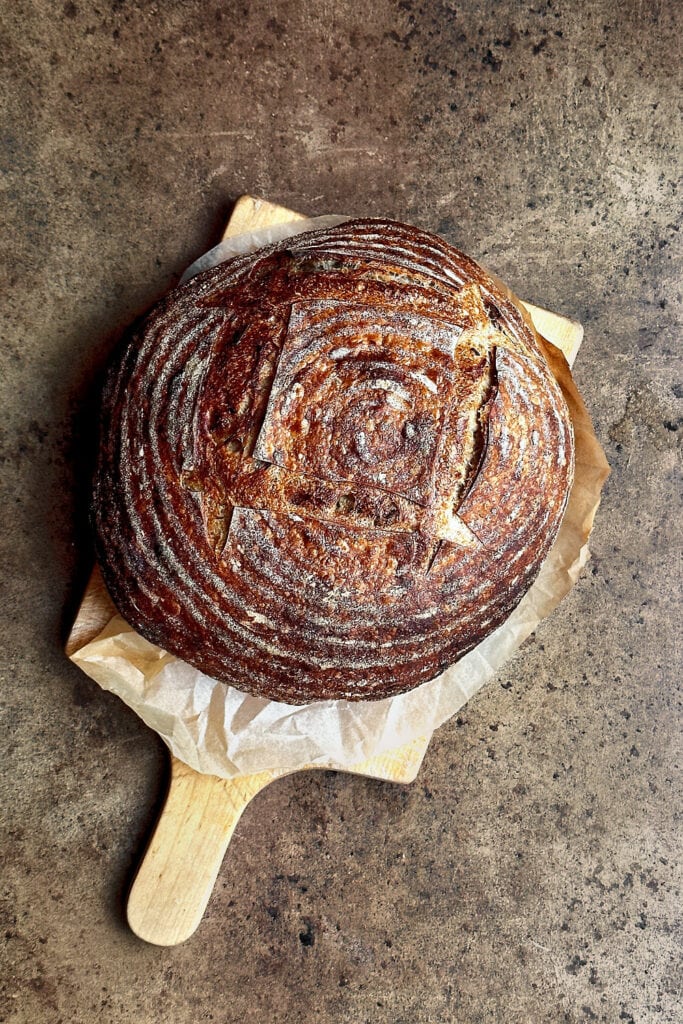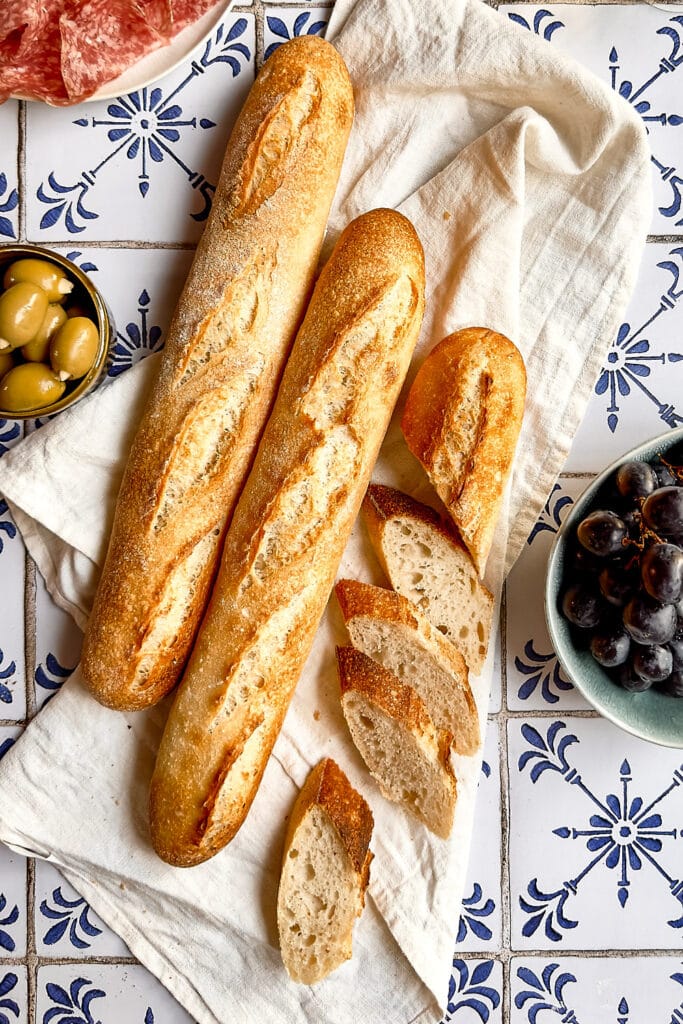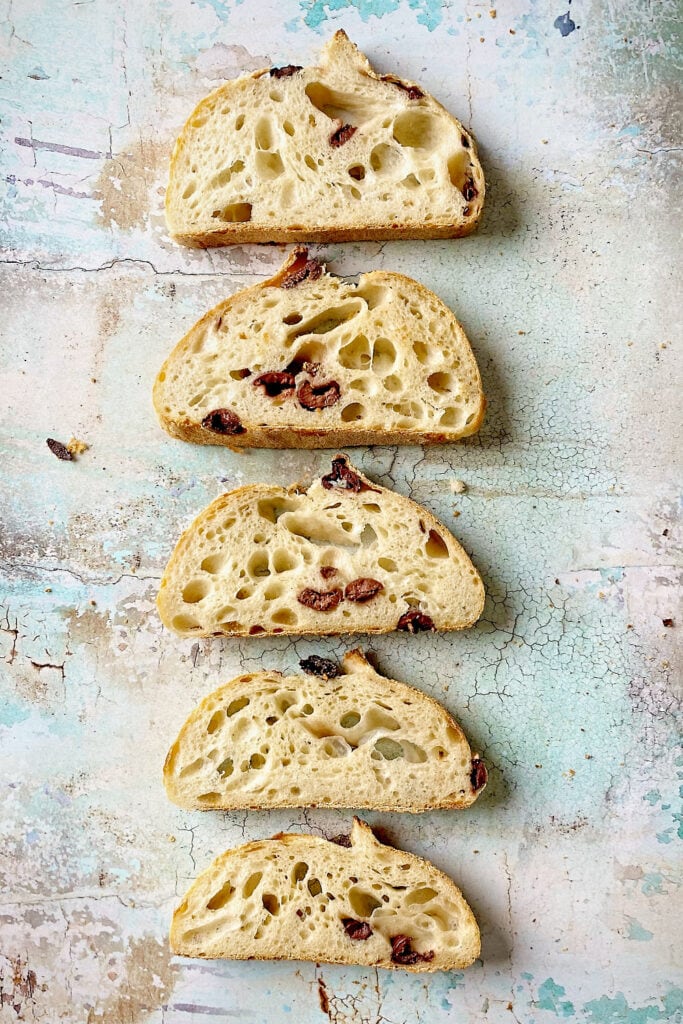Rye and Spelt Sourdough Bread
A crusty rye and spelt sourdough bread made with 80% spelt and 20% rye flour. It’s packed with flavor and full of nutritional benefits. This rustic no-knead bread requires very little hands-on time. It includes a final overnight proof in the fridge and is ready to be baked the next morning. Naturally leavened with a stiff sourdough starter.
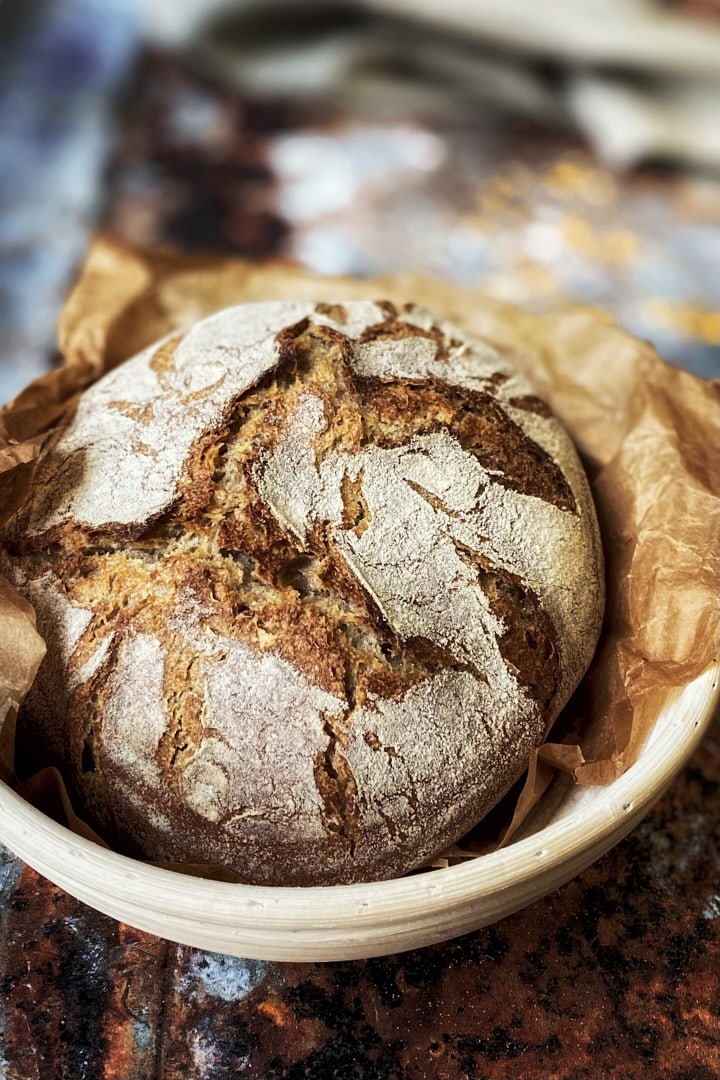
Ingredients and Tools You’ll Need
Step-by-Step Instructions
Step 1
In the morning, prepare the leaven: Mix the sourdough starter with lukewarm water and flour. Let it rest in a warm spot (around 28° Celsius) for 4 -6 hours. It’s ready to use when it has doubled or tripled in size, looks bubbly and still has a slightly domed top. Once the starter is ripe, remove the amount required for the recipe and put the remaining starter in the fridge for the next use.
Step 2
Prepare the main dough: In a mixing bowl, combine the active leaven, flour, water, and salt. Use a dough whisk to bring everything together into a shaggy dough, and finish mixing by hand. Make sure that everything is well combined without any dry patches of flour left. Let it rest for 30 minutes at room temperature. Then, perform a few rounds of the slap & fold technique to build dough strength, about 1-3 minutes. This helps to make the dough smooth and elastic. Shape it into a round and put it into a lightly oiled mixing bowl. Cover with a plastic bag or damp tea towel.
Step 3
Let the dough rise in a warm spot (around 28° C) for 3.5 – 4 hours. By the end of the bulk fermentation, the dough should have increased in size. You should see lots of smaller air bubbles throughout the dough and some larger ones on the surface. If the dough still looks dense, let it rest longer.
Step 4
Flour the proofing basket and set aside. Pre-shape the dough: Gently turn the dough out onto a lightly floured surface, bring all 4 corners of the dough into the center, overlapping, to form a loose ball. Flip it over (seam side down) and let it rest for 15-30 minutes on your work surface. During the bench rest, the gluten will relax, and the dough will spread out a bit. Flip the dough over again (seam side up) and shape a boule (round loaf). Put the dough into the prepared proofing basket with the seam side down. Cover it with a plastic bag or tea towel and put it in the fridge overnight for the final proof.
Step 5
The next morning, pre-heat the oven to 230° C with the Dutch oven inside. Turn the dough out on a piece of parchment paper and gently lift it into the Dutch oven. Bake covered for 25 minutes. For this recipe, there is no need to score the bread. It will expand and tear open organically for a more rustic appearance. After the first 25 minutes, carefully lift the bread out of the Dutch oven and finish baking directly on the oven rack for another 15 minutes, or until the crust has a deep golden hue. The bread is done if you hear a hollow sound when tapping the bottom with your knuckle. Let the loaf cool down completely before slicing. If you cut it while it’s still hot, you risk ending up with a gummy and sticky crumb. The wait is worth it!
Sample Baking Schedule
Day 1
Day 2

Common Questions About Spelt Bread
More Sourdough Recipes You May Like:
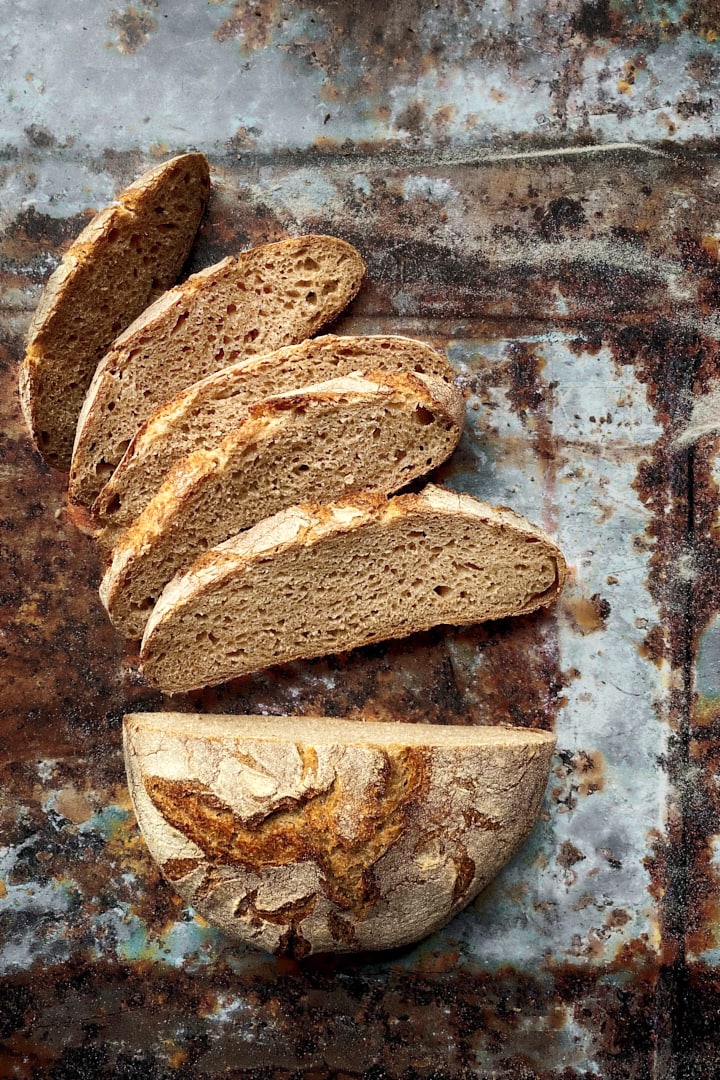
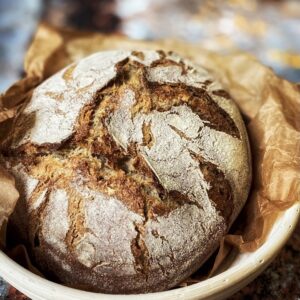
Rye and Spelt Sourdough Bread
Equipment
- Digital kitchen scale – for best results, always weigh your ingredients. It's more accurate than measuring by volume.
- Fork or dough whisk – to mix the ingredients.
- bench scraper – to help shape and handle the dough.
- Round proofing basket – to help the bread retain its shape while proofing.
- Plastic bag or tea towel – to cover the dough while resting.
- Dutch oven or large oven-safe stock pot -this creates a steamy environment for the bread to be baked in and results in better oven spring, a softer crumb and a thin and crispy crust.
Ingredients
For the Leaven:
- 30 g Sourdough starter
- 30 g Water – lukewarm around 30° C
- 60 g Flour – All-purpose flour or white spelt flour
For the Main Dough
- 80 g Leaven – keep the rest in the fridge to make the leaven for your next bread
- 210 g Water – lukewarm around 30° C
- 60 g Light rye flour
- 90 g Whole grain spelt flour
- 150 g White spelt flour
Instructions
- In the morning, prepare the leaven: Mix the sourdough starter with lukewarm water and flour. Let it rest in a warm spot (around 28 degrees Celsius) for 4 -6 hours. It's ready to use when it has doubled or tripled in size, looks bubbly and still has a slightly domed top. Once the starter is ripe, remove the amount required for the recipe and put the remaining starter in the fridge for the next use.
- Prepare the main dough: In a mixing bowl, combine the active leaven, flour, water, and salt. Use a dough whisk to bring everything together into a shaggy dough and finish mixing by hand. Make sure that everything is well combined without any dry patches of flour left. Let it rest for 30 minutes at room temperature. Then, perform a few rounds of the slap & fold technique to build dough strength, about 1-3 minutes. This helps to make the dough smooth and elastic. Shape it into a round and put it into a lightly oiled mixing bowl. Cover with a plastic bag or damp tea towel.
- Let the dough rise in a warm spot (around 28° C) for 3.5 – 4 hours. By the end of the bulk fermentation, the dough should have increased in size. You should see lots of smaller air bubbles throughout the dough and some larger ones on the surface. If the dough still looks dense, let it rest longer.
- Flour the proofing basket and set aside. Pre-shape the dough: Gently turn the dough out onto a lightly floured surface, bring all 4 corners of the dough into the center, overlapping, to form a loose ball. Flip it over (seam side down) and let it rest for 15-30 minutes on your work surface. Then, flip the dough over again (seam side up) and shape a boule (round loaf). Put the dough into the prepared proofing basket with the seam side down. Cover it with a plastic bag or tea towel and put it in the fridge overnight for the final proof.
- The next morning, pre-heat the oven to 230° C with the Dutch oven inside. Turn the dough out on a piece of parchment paper and gently lift it into the Dutch oven. Bake covered for 25 minutes. After the first 25 minutes, carefully lift the bread out of the Dutch oven and finish baking directly on the oven rack for another 15 minutes, or until the crust has a deep golden hue. The bread is done if you hear a hollow sound when taping the bottom with your knuckle. Let the loaf cool down completely before slicing.
Nutrition
Do you have any questions about this recipe?
Let me know in the comments!
